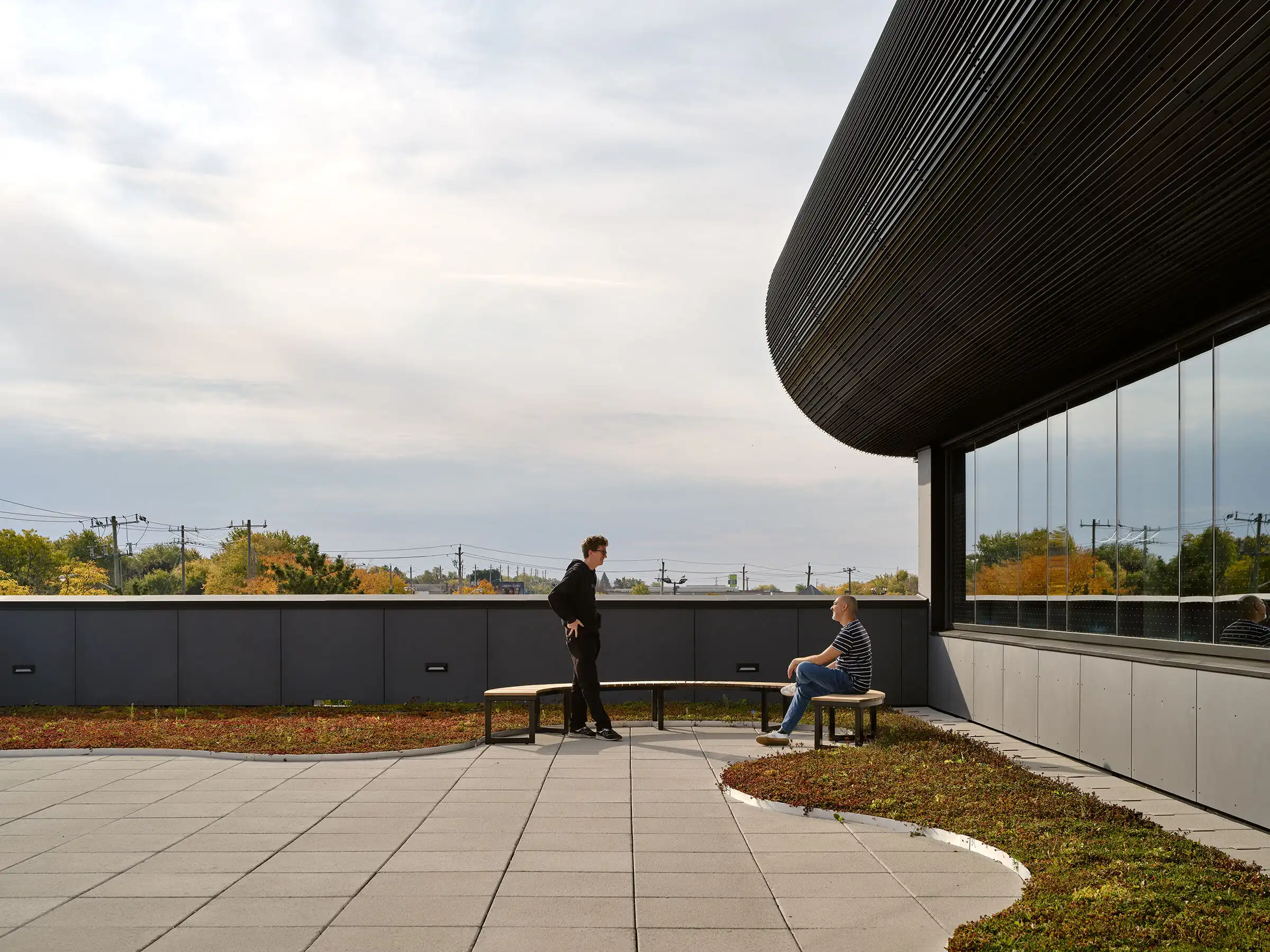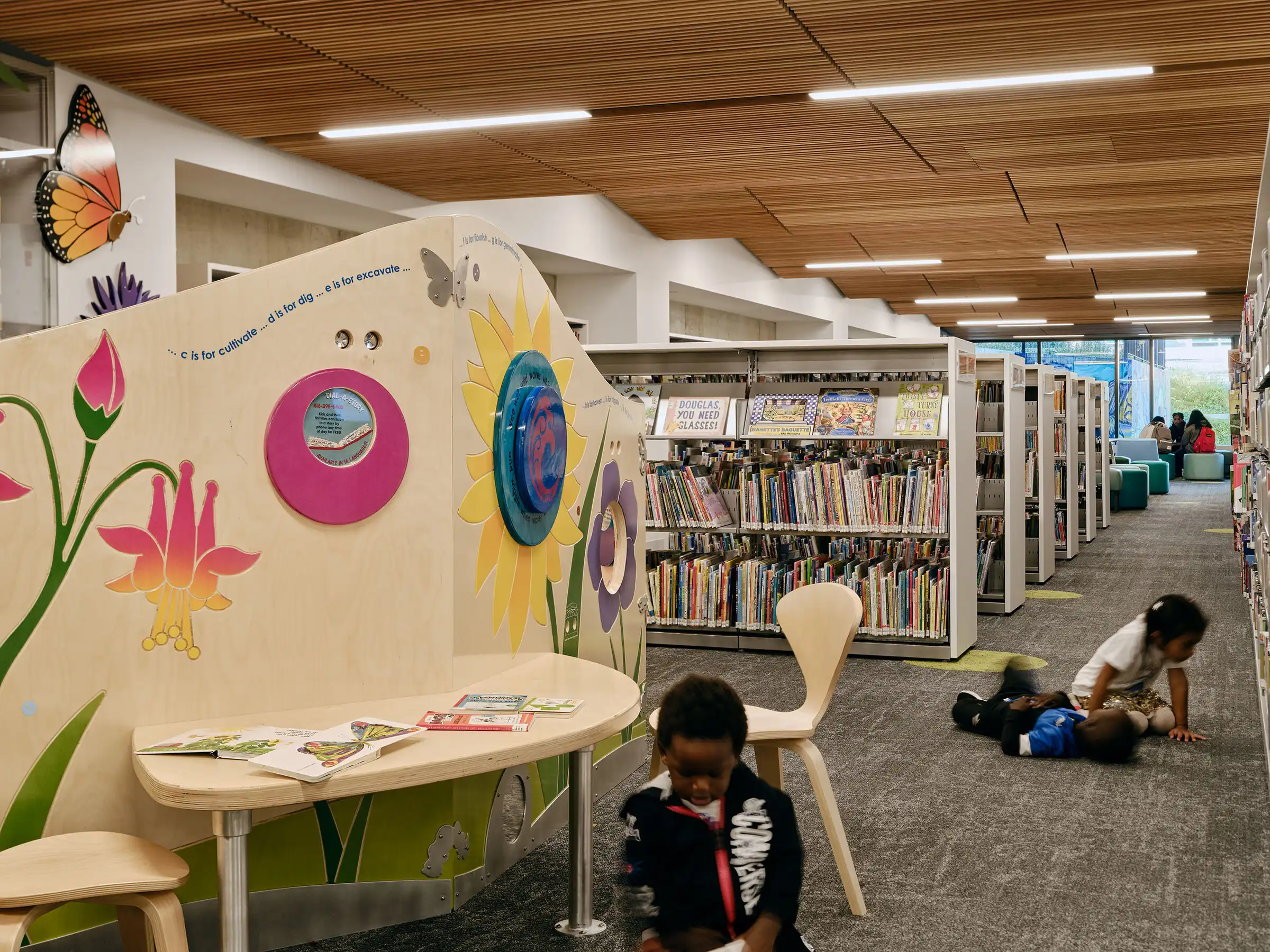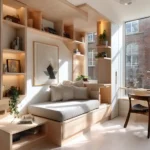First opened in 1971, the Albert Campbell Branch was conceived as a modernist symbol of civic pride in Scarborough—a rapidly growing suburb of Toronto. Designed in a bold Brutalist idiom, the building became an enduring community landmark. However, after more than five decades of use, the structure no longer aligned with contemporary needs around accessibility, cultural relevance, sustainability, and spatial equity.
Rather than opting for expansion or demolition, Toronto Public Library (TPL) chose a more sustainable and meaningful path: a radical transformation of the existing building. In collaboration with LGA Architectural Partners, known for their acclaimed work on the Scarborough Civic Centre Library, the team envisioned a project that would not only upgrade the facility but reposition it as a vibrant, inclusive, and culturally rooted public space.

Unearthing Potential: Reconnecting to the Landscape
A cornerstone of LGA’s approach was to repurpose underutilized space rather than expand. Through an incisive spatial analysis, the team discovered that 25% of back-of-house areas could be unlocked and made public by re-engaging the building’s buried first floor. This opened the door to a transformation rooted in reuse—both spatial and symbolic.
One of the most impactful changes was relocating the main entrance from the second to the first floor. Previously accessible only via a raised ramp, the library’s entry experience felt disconnected and unintuitive. By reshaping the surrounding land to follow the site’s natural topography, the team introduced a new ground-level entrance that enhances both accessibility and spatial fluidity. Large new windows now connect the first floor with the surrounding landscape, anchoring the library in its environment and community.
Embedding Indigenous Knowledge and Cultural Safety
Crucially, this reconnection to land was designed through a lens of Indigenous consultation and collaboration. TPL engaged Miinikaan Innovation and Design and the Red Urban Nation Artist Collective to shape a culturally resonant arrival experience. The front plaza now features a medicine wheel garden, native plantings, and a mural wall—symbolic elements that not only honor Indigenous histories but create a welcoming, culturally safe space for all users.
In a further act of respect and continuity, five grandfather trees that needed removal for the topographical shift were ceremonially honored. Their wood was salvaged and dried for reuse in the interior fit-out—specifically, in the construction of the library’s smudging room, which supports traditional Indigenous cultural practices.

Carving Openness: Light, Flow, and Vertical Dialogue
Inside the library, LGA transformed the spatial logic of the building by removing obstructive walls and introducing a large floor opening above the new entry, creating clear visual and physical connections across both levels. This gesture brings vertical transparency and wayfinding clarity, reinforcing the building’s renewed openness.
The once-dated red metal ceilings were reimagined with wood slats in soft wave geometries—evoking warmth, enhancing acoustics, and subtly concealing new mechanical systems. The interplay between natural materials and diffused lighting creates a calm, welcoming atmosphere that is both contemporary and timeless.
Intuitive Interactions and Flexible Public Space
Public libraries today are no longer static repositories of books—they are dynamic social infrastructures where people gather, learn, and connect. To support this evolution, the design integrates multi-functional millwork nodes throughout the space. These custom-built service points act as book displays, self-checkout stations, and staff interaction hubs, allowing users to orient themselves organically while navigating the branch.
The repurposing of back-of-house areas further expands the building’s community function. New flexible rooms accommodate workshops, cultural events, study groups, and quiet reading, enabling the library to respond to the diverse needs of Scarborough’s evolving population.

A Model for Sustainable Reuse
By embracing reuse over demolition, the Albert Campbell Branch demonstrates how architectural stewardship can honor the past while embracing the future. The project achieves key TPL goals: reducing waste, increasing accessibility, and nurturing cultural inclusion—all within the shell of an existing structure.
LGA Partner Brock James encapsulates the project’s ethos:
“We aim to make libraries flexible and inclusive places grounded in the local community. At Albert Campbell, this meant adopting a reuse mindset and reimagining the branch’s potential to connect and inspire people.”
The new Albert Campbell Branch is a powerful model of transformational preservation—a space where Brutalist legacy meets Indigenous design, sustainability meets storytelling, and a civic building becomes a deeply local and human experience.
Photography: Younes Bounhar – Doublespace Photography
- adaptive reuse architecture
- Albert Campbell Library Renovation
- Brutalist Building Transformation
- Civic Building Preservation
- Community-Centered Library
- Cultural Safety in Architecture
- Flexible Public Spaces
- Indigenous Consultation in Design
- Indigenous Cultural Integration
- LGA Architectural Partners
- Library Entrance Redesign
- Modern Library Interiors
- Natural Light in Public Buildings
- Public Library Accessibility
- Reuse Over Demolition
- Scarborough Architecture Project
- Sustainable Library Design
- Toronto Public Library Architecture
- Urban Library Renovation
- Wood Slat Ceilings Design

















































Leave a comment